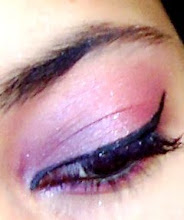q1-compare and contrasts the representation of teenagers in the two texts. (8 marks)
In the bully opening the non-diegetic music portrays a happy kind of atmosphere until the teacher speaks to Hopkins and lectures him. We then see him being portrayed as a rebellious teenager who creates an anti-school subculture as he is one shot shooting another person; in another he is slapping them and another causing an explosion in the lab. He is portrayed as a teen who is concerned with status and being deviant to get attention. Similarly the girl is presented as regretful and sarcastic when she mentions her being in the pictures. He is constructed as someone to fear as he is a bully who’s always on the move getting up to no good with his slingshot and people are running away from him. In addition even the dinner is lady is stereotypically blunt and unhygienic.
Similarly in the opening of skins teens are constructed as rebellious and carefree as they are promiscuous, confrontational and happy go lucky people. The montage introduces the different characters who we gain an insight to their life of smoking, bisexual encounters as they are at an experimental age. Although we are desensitised to this it could cause copycat behaviour as well as creating moral panics.
Overall the two representations are similar in the way they highlight negative aspects of teenage years but these constructions are mediated and are unfair as this could cause people to stereotype all teenagers as even though it’s not a wide representation.
Q2- consider the view that the current represenstation of teenagers is simply another 'moral panic'
Stanley Cohen coined the term moral panic and was used to describe the folk devil group that caused concern to the rest of society. The bully and characters in skins do this as they are presented negatively and rebellious and could impose their ways of thinking and lifestyle to everyone. Old fashioned people could be concerned about these groups as they behave in immoral ways and are promiscious, smoke and dont take anything seriously therefore they not thinking of the consequences can affect other people.
However audiences can choosoe to interpret the text differently as these portrayls which may cause a moral panic may in fact educate an audience no to do these things cause it causes conflict. Furthermore not all characters are presented as rebellious and cause a moral panic for instance in Lisa Simpson is hardworking witty and quirky therefore the assumption that all teenagers are deviant and cause moral panics isnt accurate.
Q3- To what extent has new and digital media given younger audiences the opportunities to shape their own media representations? (12 marks)
new and digital media is becoming more widespread and convienient for evryone to use. The introduction of social netowkring sites has allowed people to share their own identity with the public as people take picstures and videos of them doing stuff we gain a better undertsnding of what they are like and their interests. Futhermore forums and fanpages have allowed teenagers to vioce their opionions on matters and by doing so they can change others peoples outlook on things as not everyone is into streetculture and knife crime and some loose their friends etc. This can portray them as considerate and intelligent unlike how they are usually porteayed by newspapers as irressponsible.

No comments:
Post a Comment